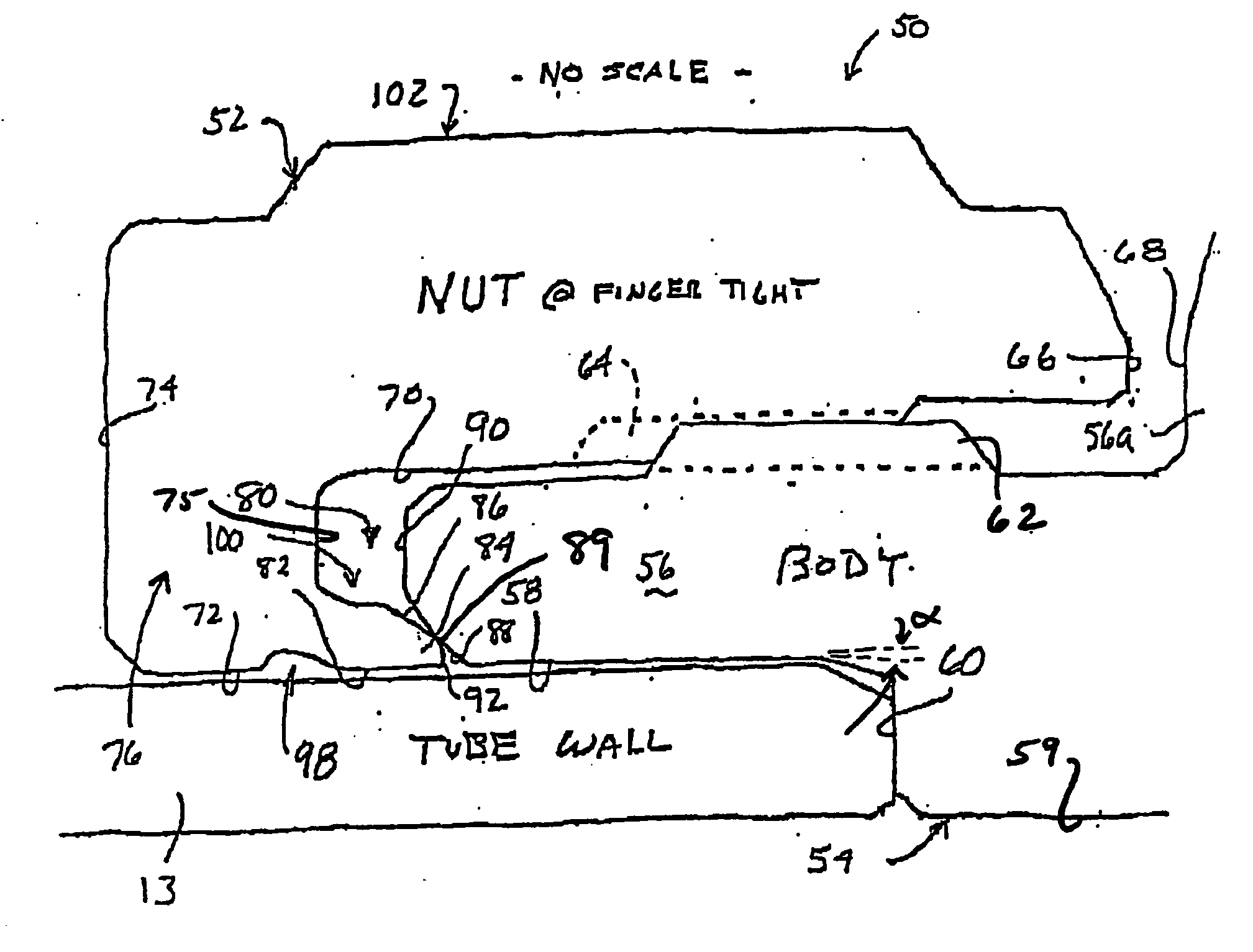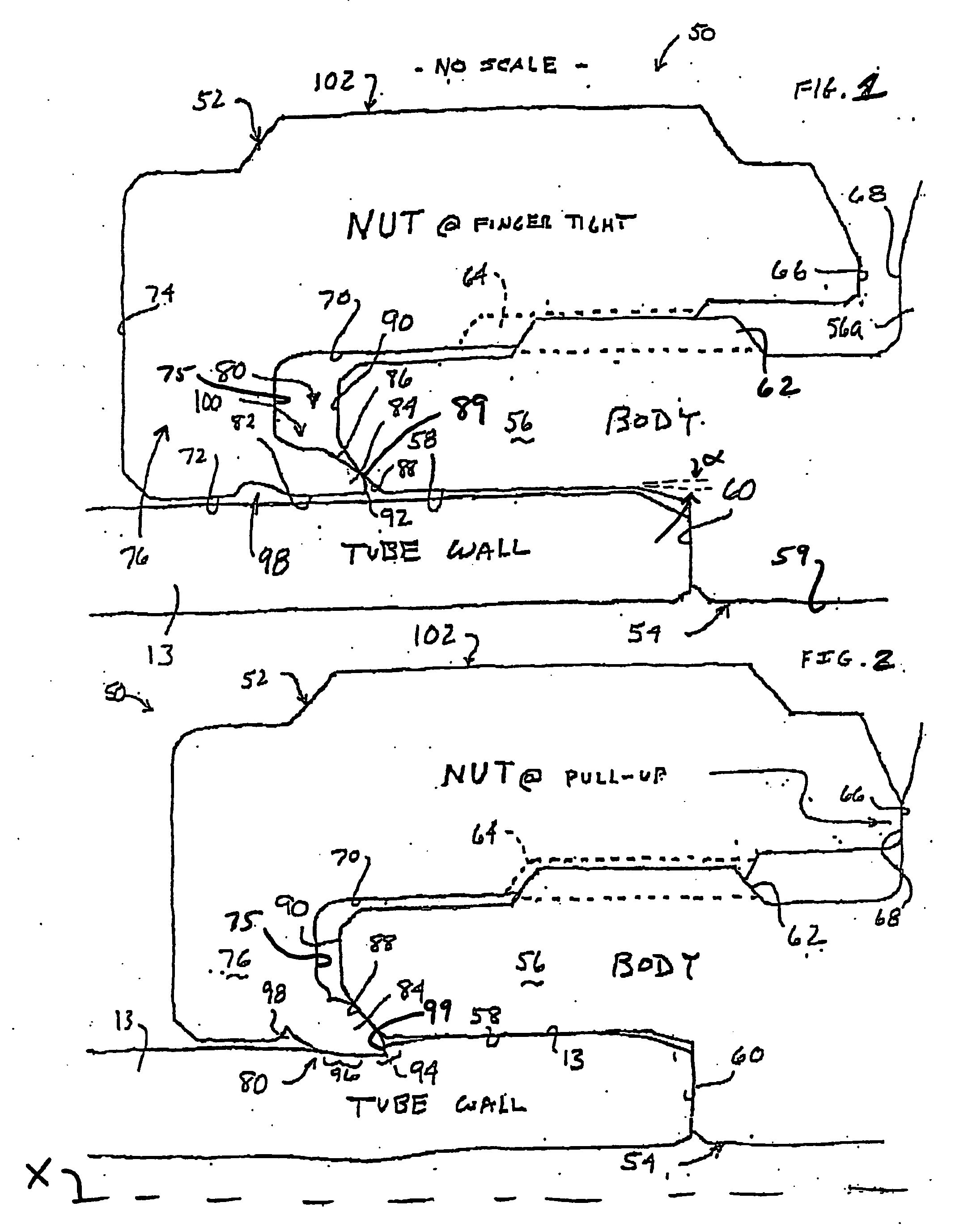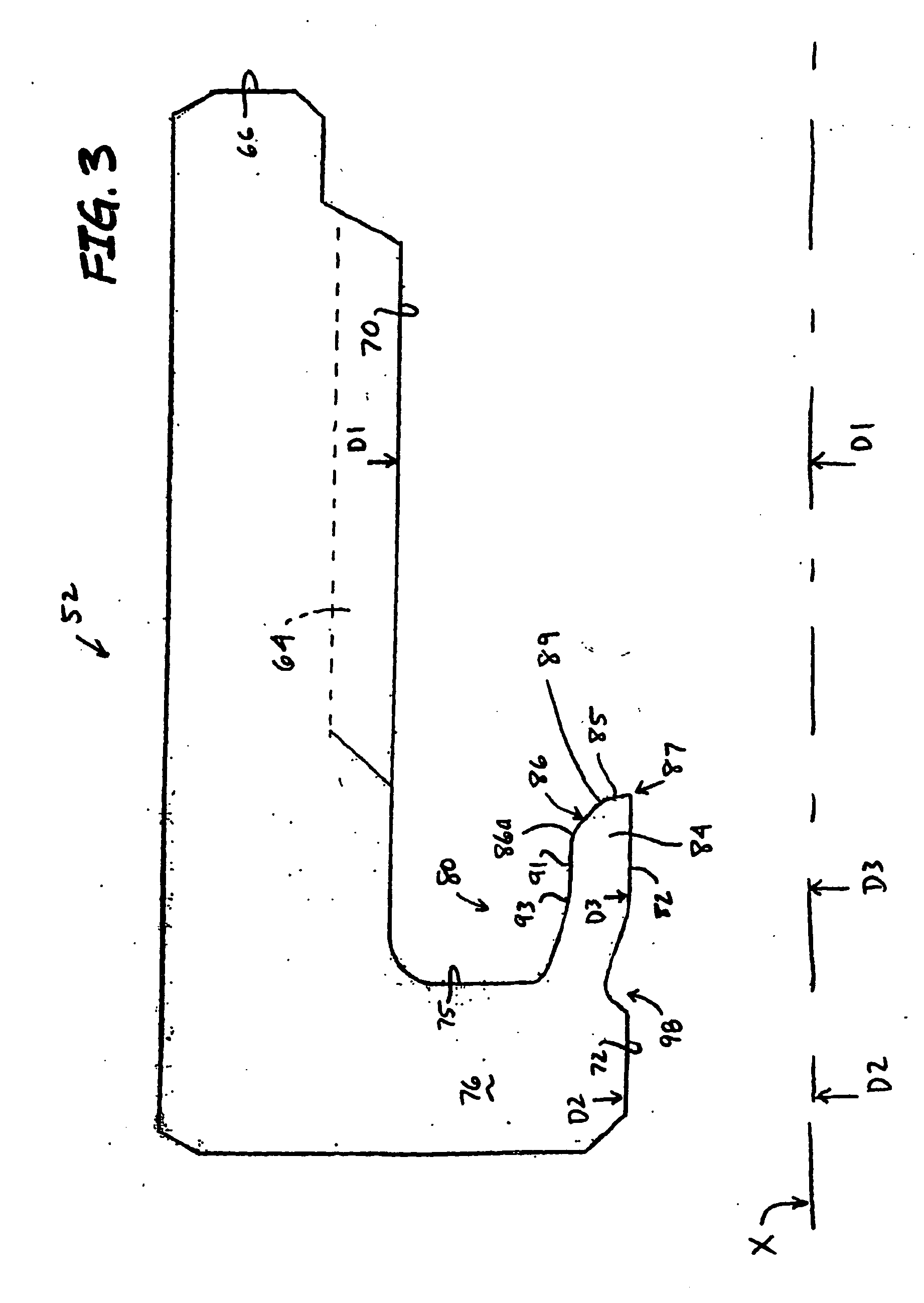Tube fitting for stainless steel tubing
a technology of stainless steel tubing and fittings, which is applied in the direction of hose connections, sleeves/socket joints, mechanical equipment, etc., can solve the problems of difficult design in order to achieve the desired tube grip and seal function, difficult to grip heavy wall tubing, etc., to achieve improved sealing function, improved tube grip, and excellent tube grip function
- Summary
- Abstract
- Description
- Claims
- Application Information
AI Technical Summary
Benefits of technology
Problems solved by technology
Method used
Image
Examples
Embodiment Construction
[0034] In accordance then with one aspect of the invention, a tube fitting is provided having a tube gripping device that acts against a steep camming angle surface of one of the fitting components. The steep camming surface angle is particularly advantageous when the hardness of the tube gripping device has a ratio of at least about 3.3 times greater and preferably at least 4 times greater to the hardness of the tubing material. The present disclosure utilizes these aspects of the invention in two distinct general embodiments. The first general embodiment that will be described is a tube fitting arrangement in which a tube gripping device is provided that is integral with one of the two threaded components, namely the female threaded nut component. The second general embodiment is that of a tube fitting for stainless steel tubing that uses a separate single ferrule as the tube gripping device along with the male and female threaded components. Both general embodiments may share a n...
PUM
| Property | Measurement | Unit |
|---|---|---|
| Angle | aaaaa | aaaaa |
| Angle | aaaaa | aaaaa |
| Angle | aaaaa | aaaaa |
Abstract
Description
Claims
Application Information
 Login to View More
Login to View More - R&D
- Intellectual Property
- Life Sciences
- Materials
- Tech Scout
- Unparalleled Data Quality
- Higher Quality Content
- 60% Fewer Hallucinations
Browse by: Latest US Patents, China's latest patents, Technical Efficacy Thesaurus, Application Domain, Technology Topic, Popular Technical Reports.
© 2025 PatSnap. All rights reserved.Legal|Privacy policy|Modern Slavery Act Transparency Statement|Sitemap|About US| Contact US: help@patsnap.com



